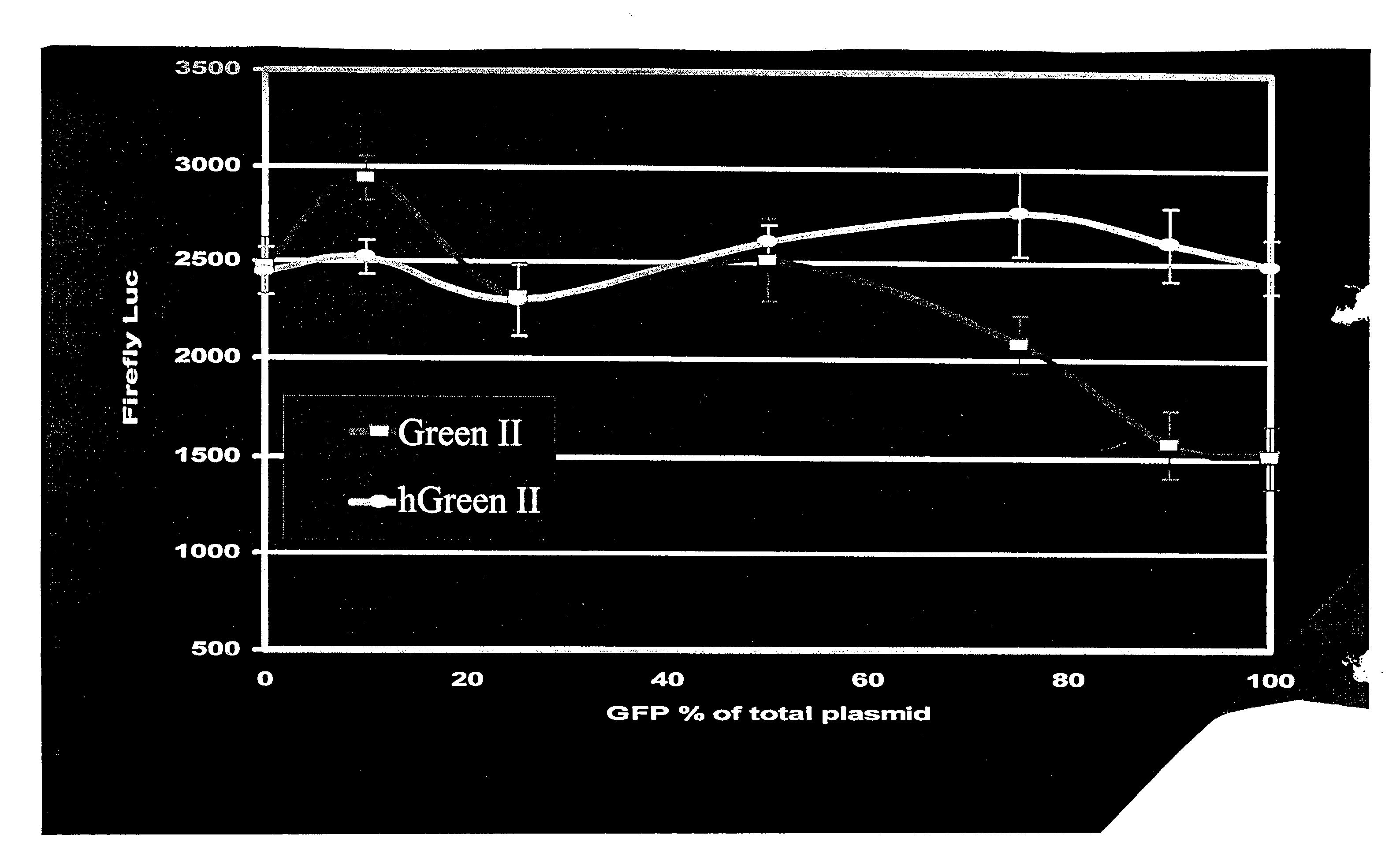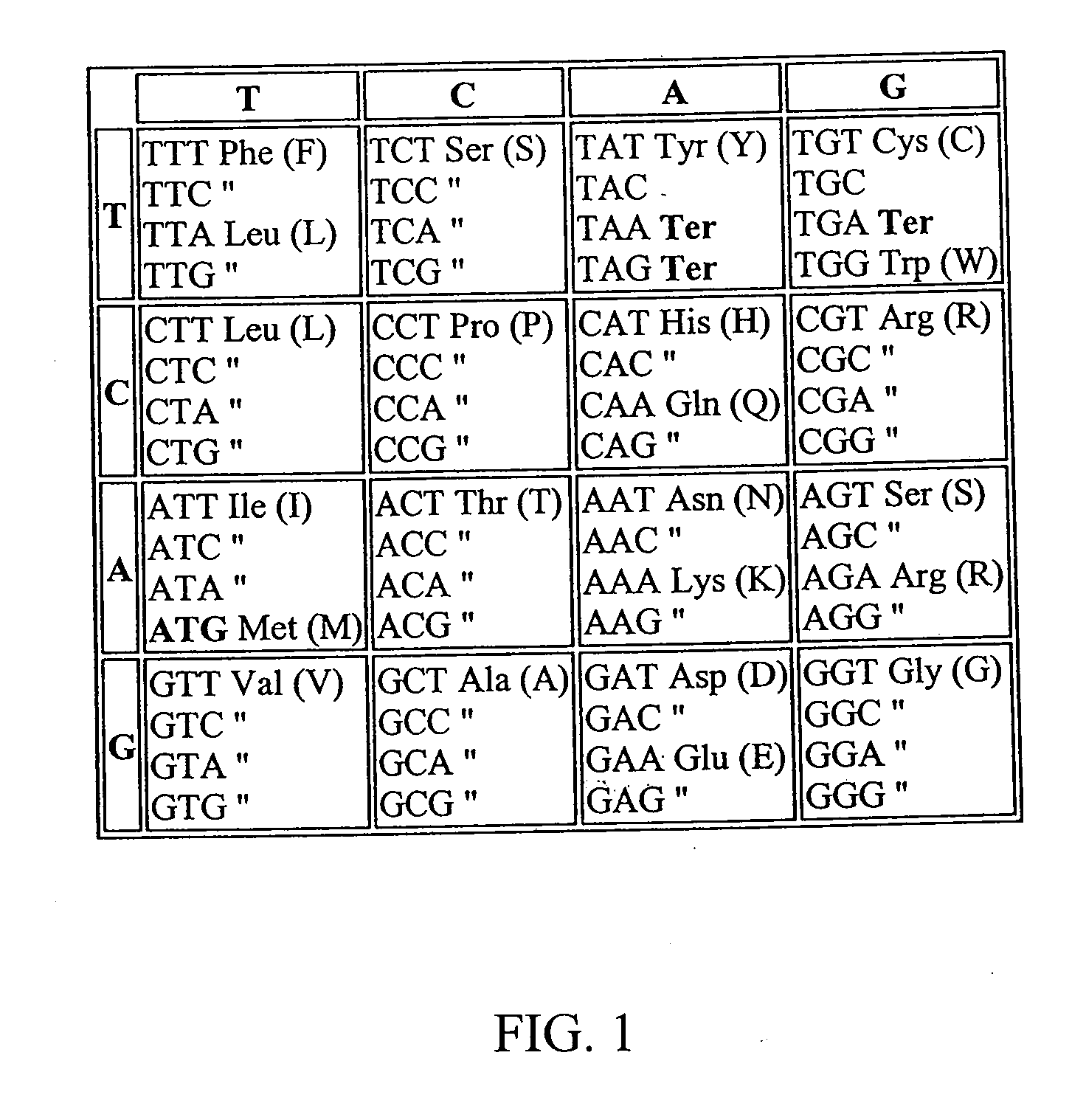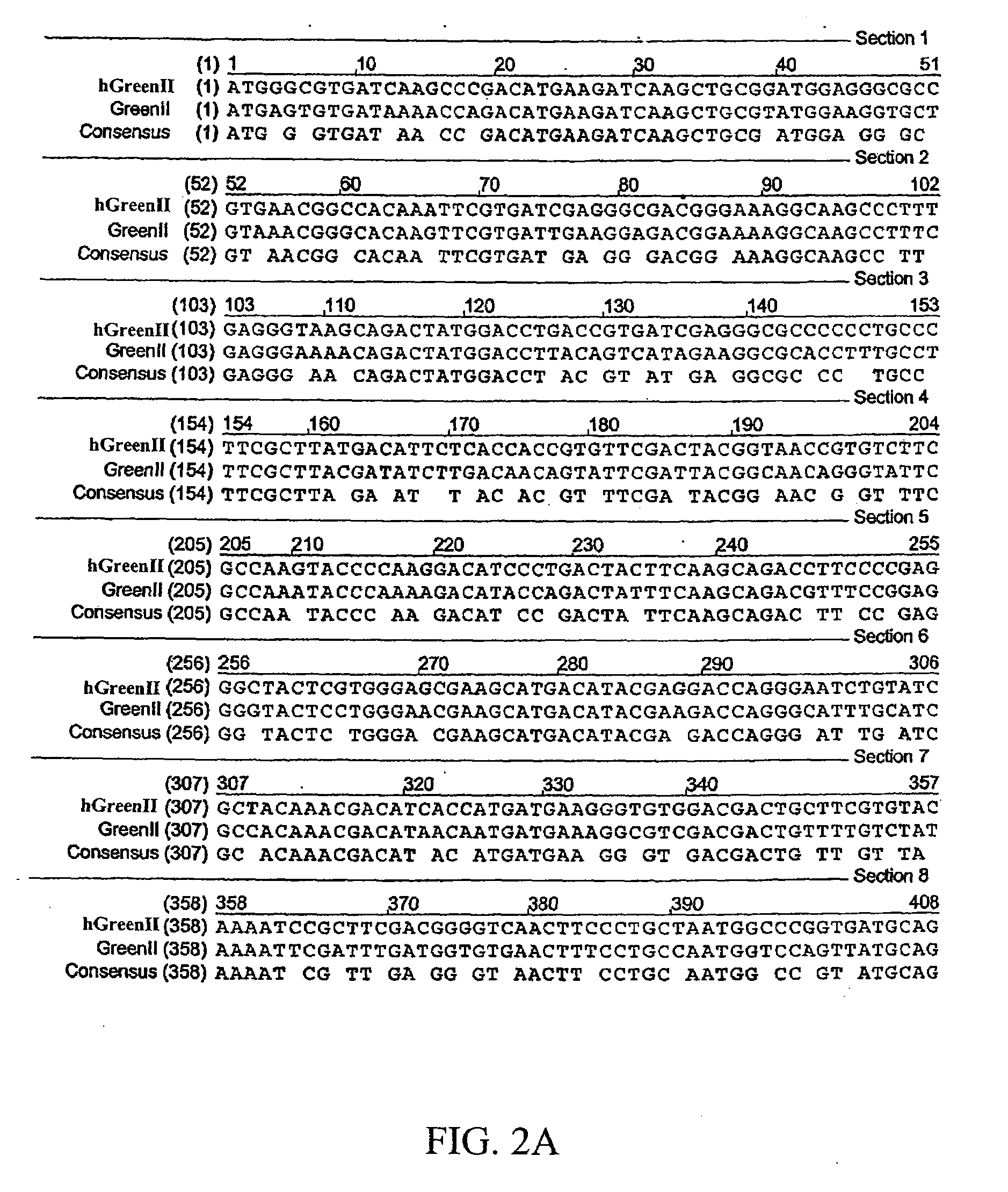Synthetic nucleic acids from aquatic species
a technology of synthetic nucleic acids and aquatic species, applied in the field of fluorescence proteins, can solve the problems of adversely affecting transcription, abnormal expression of synthetic dna, and unintentional introduction of inappropriate transcription regulatory sequences into the synthetic nucleic acid molecule, and achieve the effect of reducing the number of known transcription regulatory sequences and improving expression levels of mammalian cells
- Summary
- Abstract
- Description
- Claims
- Application Information
AI Technical Summary
Benefits of technology
Problems solved by technology
Method used
Image
Examples
example 1
Synthetic Green Fluorescent Protein Nucleic Acid Molecules
[0135]McGFP is a green fluorescent protein (GFP) that was isolated from Montastraea cavernosa. McGFP was mutated during a first round of low stringency PCR to induce mutations in the wild type gene. From the first round of PCR, Green I was produced. Green I had higher relative fluorescence intensity than the wild type GFP. Green I was mutated during a second round of low stringency PCR performed on the DNA encoding Green I to generate Green II. When compared to the DNA sequence encoding the Green I, the DNA encoding Green II contains a single nucleotide change: a cytosine to thymine mutation at nucleotide 527. This results in an S at position 176 in Green I, and an F at the same position in Green II. Green II had a high resistance to photobleaching.
[0136]Green II was used as a parent gene in humanization of the nucleic acid sequences. A synthetic gene sequence was designed in silico using the following software tools: MatInsp...
example 2
[0173]A vector construct was made by cloning the synthetic hGreen II gene into a plasmid pCI-Neo Mammalian Expression Vector (Promega Corp.). In addition, a vector construct was made by cloning the parent Green II gene into a plasmid pCI-Neo Mammalian Expression Vector (Promega Corp.) As is illustrated in FIGS. 5A-5B and 6A-6B, the hGreen II construct showed slightly higher expression in the CHO cells than did the parent Green II construct. In a first experiment using CHO cells, parent Green II showed 19.8% transfection efficiency (FIG. 5A), and hGreen II showed 21.2% transfection efficiency (FIG. 5B). In a second experiment with the CHO cells, parent Green II showed 24.2% transfection efficiency (FIG. 6A), and hGreen II showed 25.5% transfection efficiency (FIG. 6B). More importantly, the degree of fluorescence was higher in the cells transformed by the hGreen II construct. In FIG. 5A, the parent Green II, 22.4% fluoresced at 3 full logs higher than untransfected cells while FIG. 5...
PUM
| Property | Measurement | Unit |
|---|---|---|
| Fraction | aaaaa | aaaaa |
| Fraction | aaaaa | aaaaa |
| Fraction | aaaaa | aaaaa |
Abstract
Description
Claims
Application Information
 Login to View More
Login to View More - R&D
- Intellectual Property
- Life Sciences
- Materials
- Tech Scout
- Unparalleled Data Quality
- Higher Quality Content
- 60% Fewer Hallucinations
Browse by: Latest US Patents, China's latest patents, Technical Efficacy Thesaurus, Application Domain, Technology Topic, Popular Technical Reports.
© 2025 PatSnap. All rights reserved.Legal|Privacy policy|Modern Slavery Act Transparency Statement|Sitemap|About US| Contact US: help@patsnap.com



